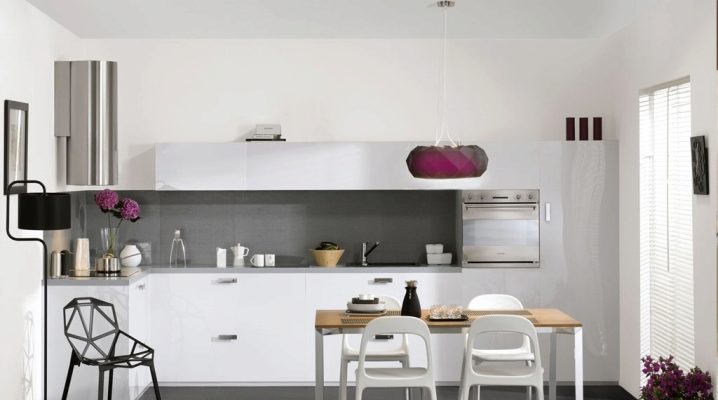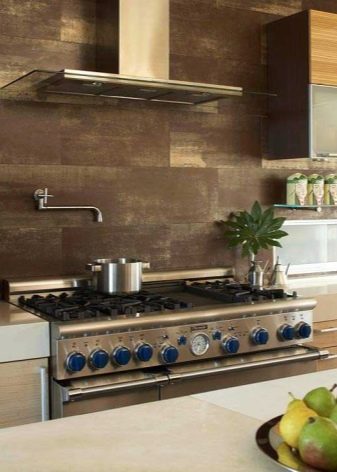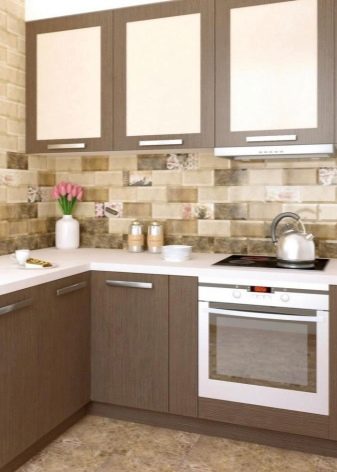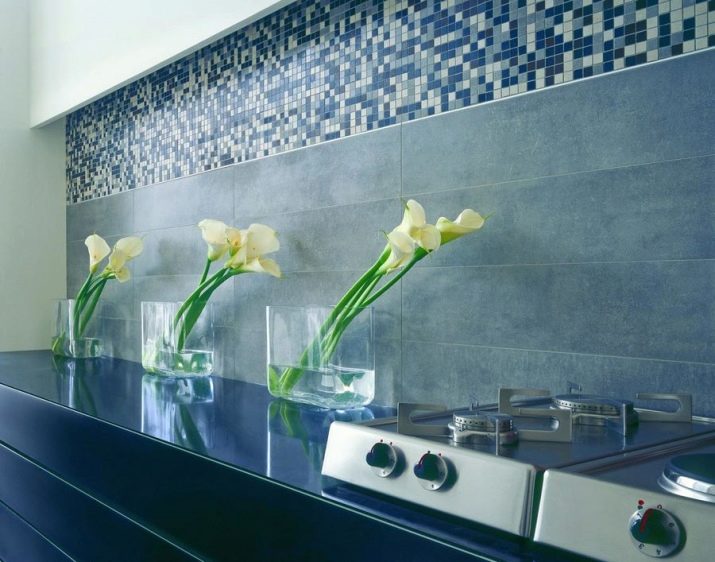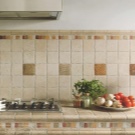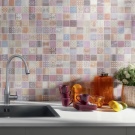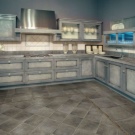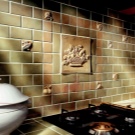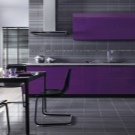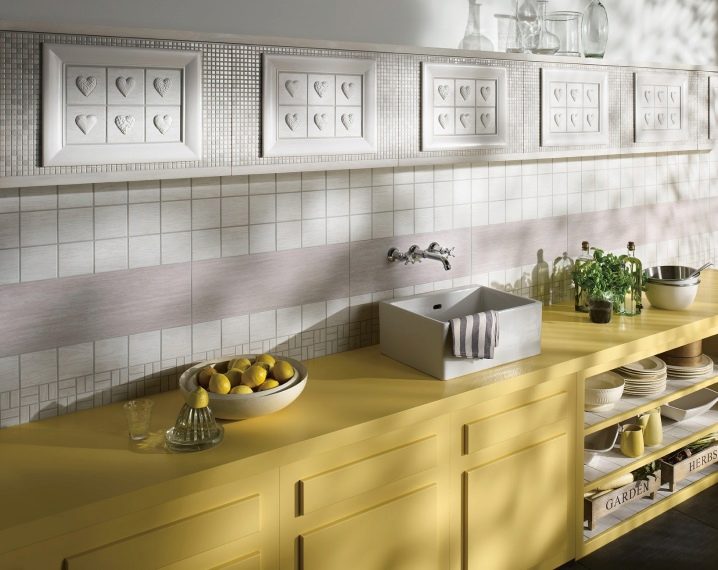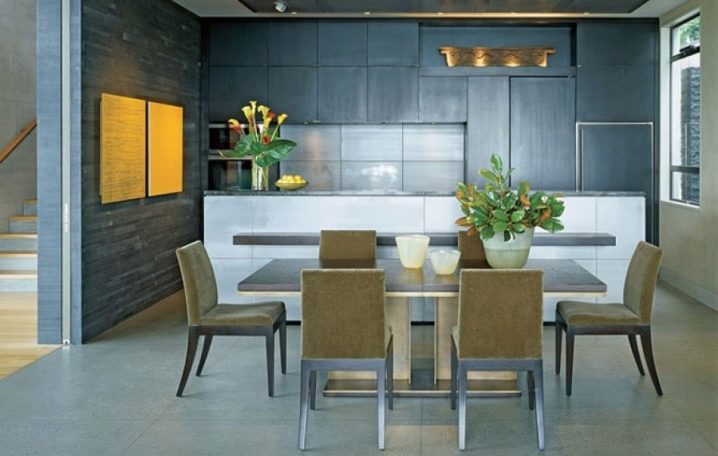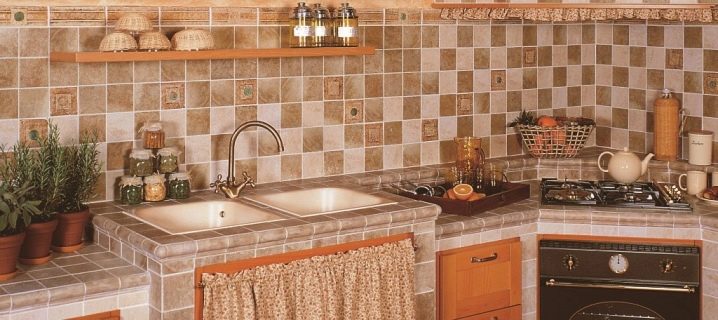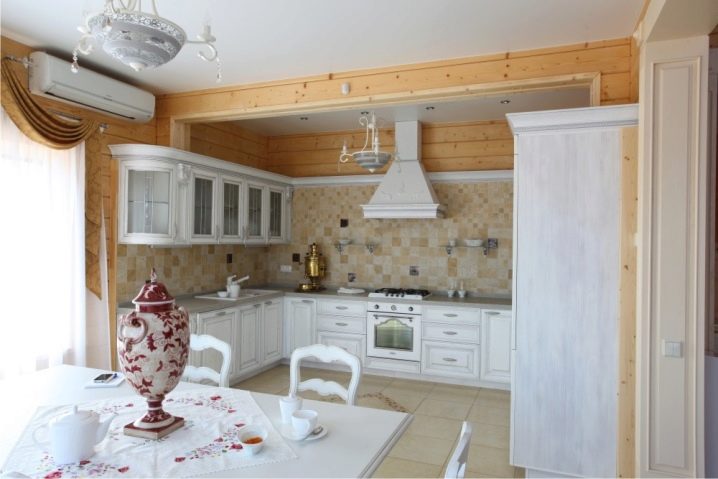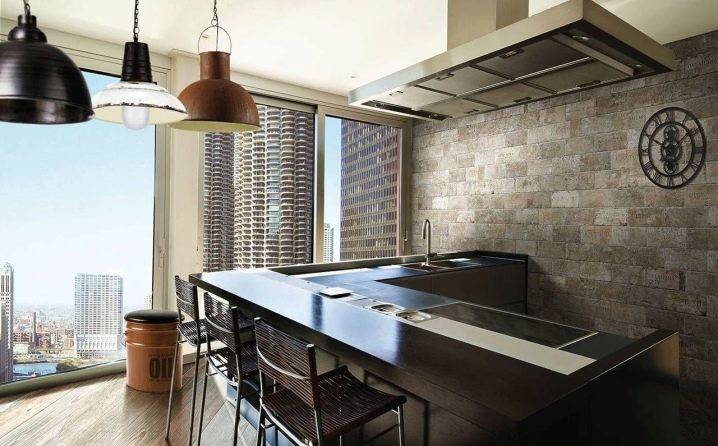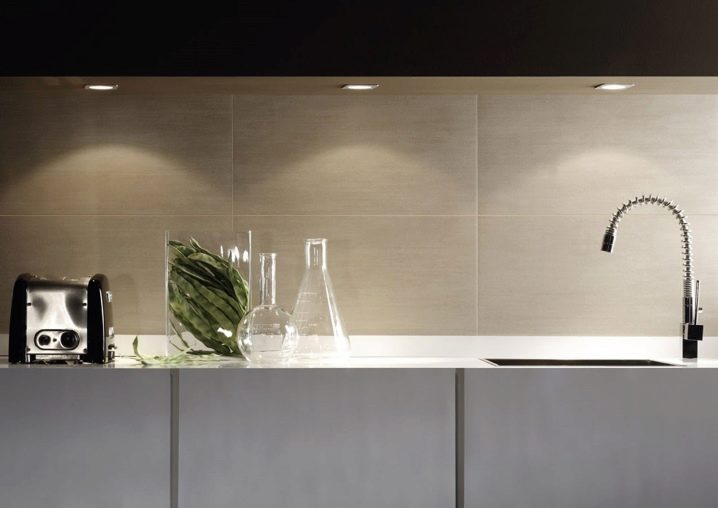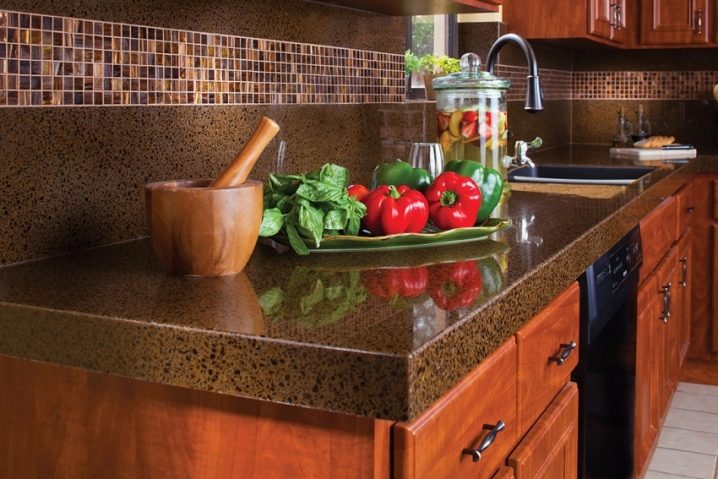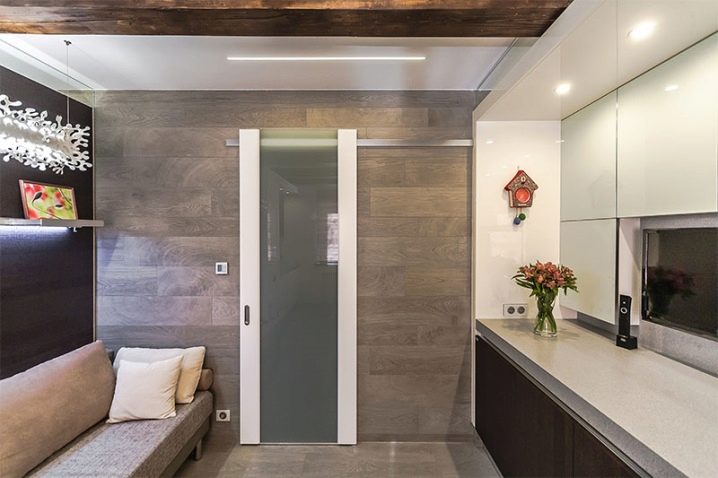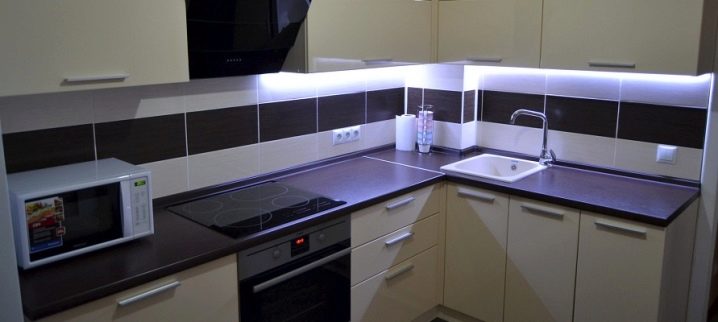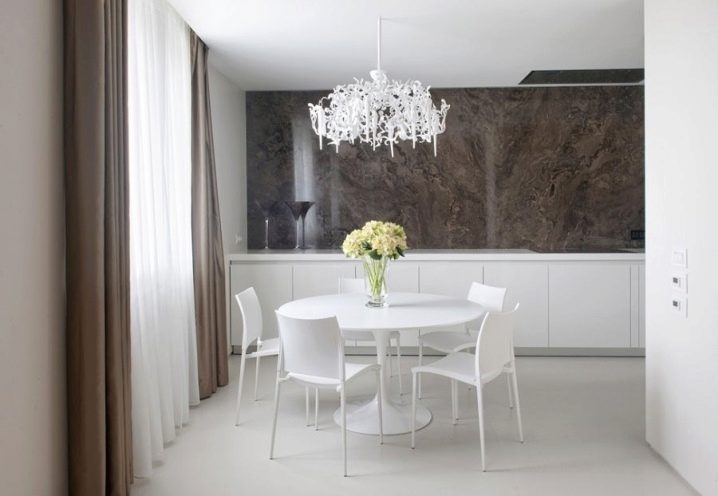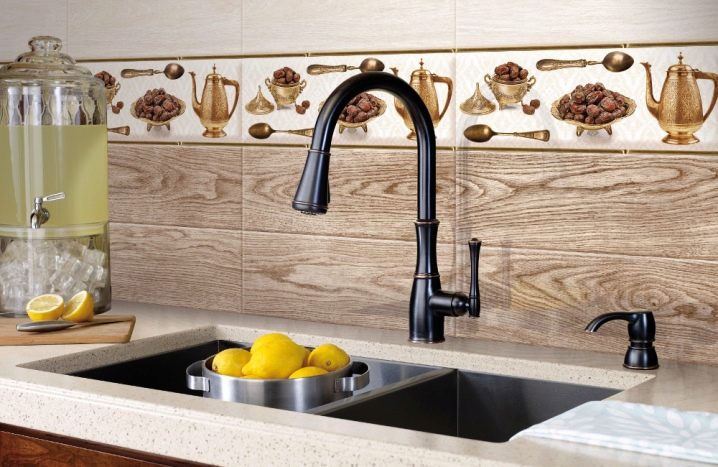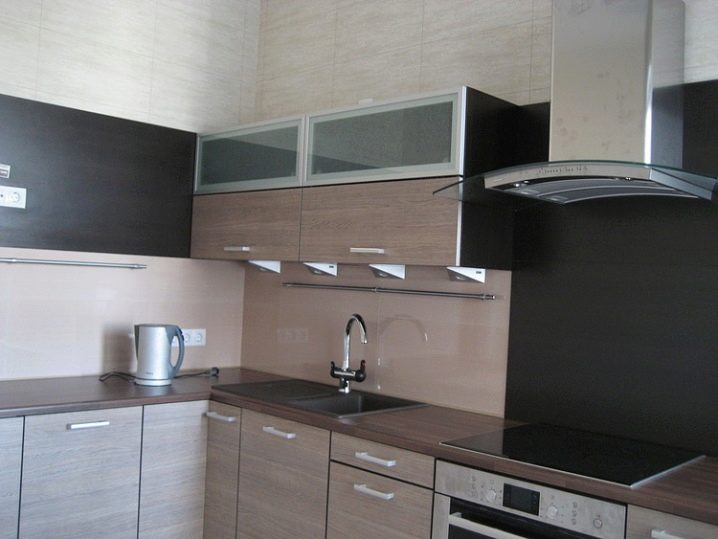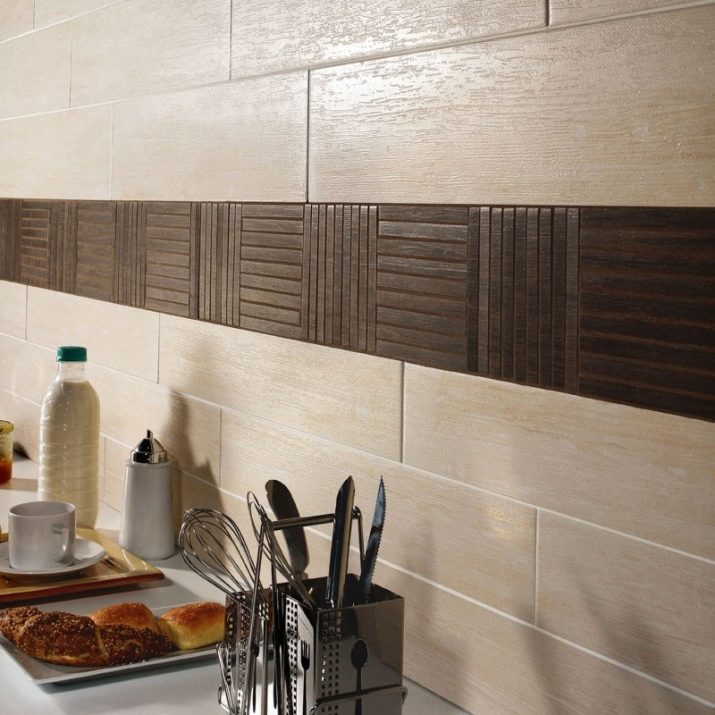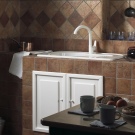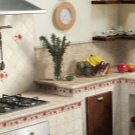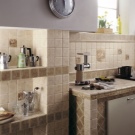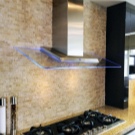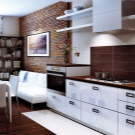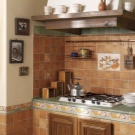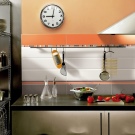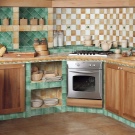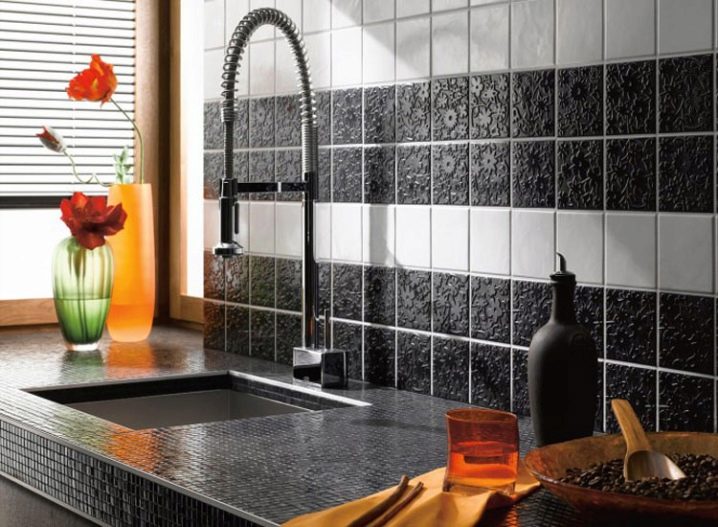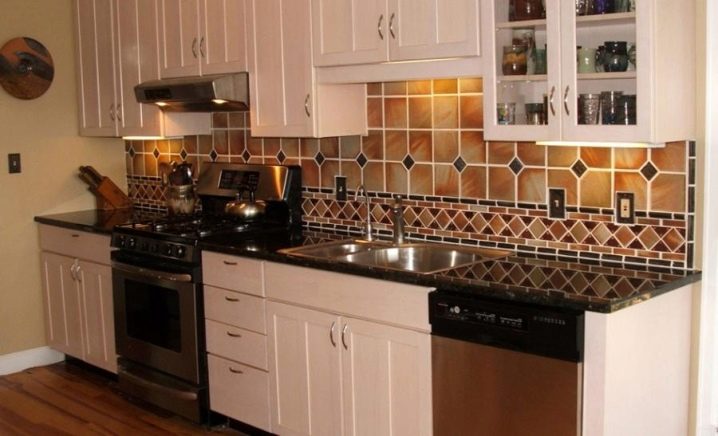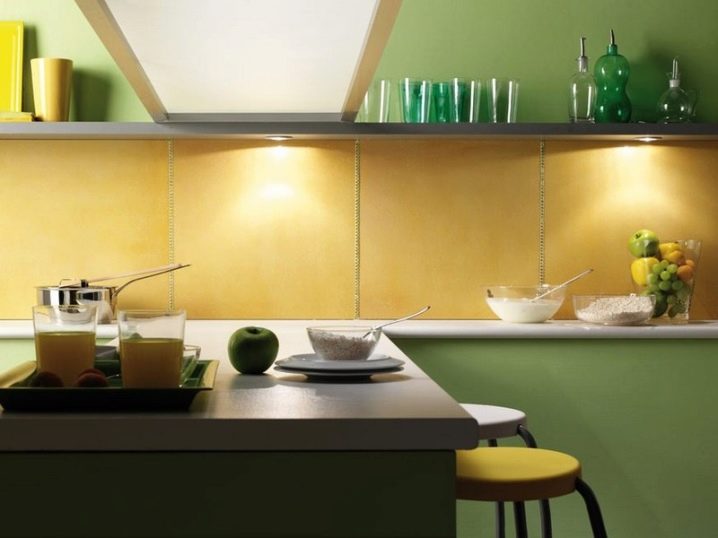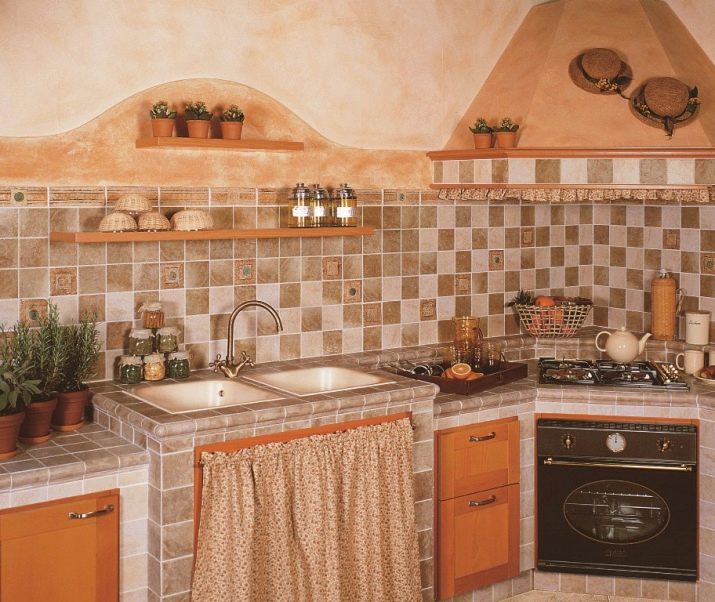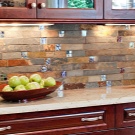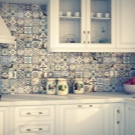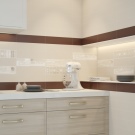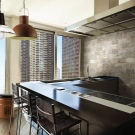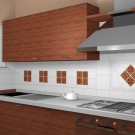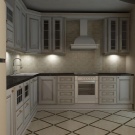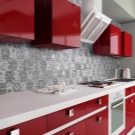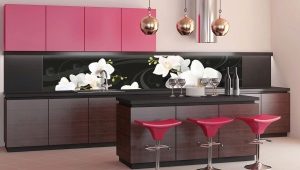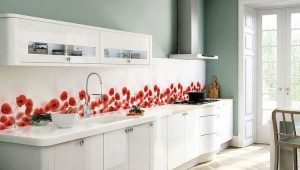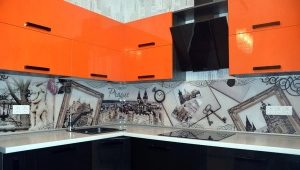Porcelain stoneware apron in the kitchen
Manufacturing technology of porcelain stoneware is similar to the process of creating ceramic tiles. If the production of ceramic tiles requires one type of clay, then two types of clay with different properties are mixed to make porcelain stoneware. In addition to clay, it contains quartz sand and silicate.
Due to the fact that the coloring pigments are added to the raw mixture, the tile is completely painted in the desired color, whereas on the ceramic tile the coloring is applied only on top. After that, the composition is poured into forms, placed under a press and calcined at a temperature of 1300 degrees.
Species
Matt. This is the most budget option of porcelain. Brushed porcelain stoneware blends well with other finishing materials. It can be wallpaper, plastic, paint or glass panel. The tile has an attractive appearance, while practical and durable in operation.
Polished. The tile is smooth with a smooth surface. Modern technologies allow to give a glossy look to porcelain stoneware. Glazed tile with a polished surface has a very pleasant surface and an attractive appearance. Since the polished surface of the tile is very slippery, it is not used very often for laying on the floor. But the kitchen apron from it turns out great.
Semi-polished A characteristic feature of this type of porcelain stoneware is its non-uniform relief surface. When laying such a tile, the seams are almost invisible.
Technical. Such material is superior to abrasion resistance. Therefore, it is most often used in industrial premises.
Glazed. Smalt glaze is applied to the tile to protect it from mechanical damage, and then the product is fired in special furnaces at very high temperatures. It has a very beautiful appearance and a different texture. To facilitate the process of laying tiles are available in the form of a square measuring 60x60 cm or a rectangle. Such a type of porcelain stoneware has increased wear resistance, therefore it is ideal not only for a kitchen apron, but also for decorating walls in all kitchens, bathrooms and even the hallway.
Satin finish. It contains mineral salts.Its microporous surface prevents the growth of microbes and bacteria, which is very important for rooms where food is cooked. This sort of porcelain stoneware is obtained by depositing minerals with different melting points on the surface before the final roasting. Unlike polished tiles, satin porcelain stoneware does not slip, which makes it possible to use it not only for finishing the working surface of the kitchen, but also for laying the floor.
Features of work
Due to the increased strength of this type of finishing material, the area of its application is not limited exclusively to the kitchen apron. Moreover, the cost of porcelain is quite high compared with the same ceramic tiles. It makes sense to apply where it is required is a heavy-duty coating.
If you still decided to use this material to finish the working area in the kitchen, you should know a few rules when laying it: Since the surface of porcelain stoneware is not porous, the tile is laid on a special adhesive solution with various additives that improve its flexibility and mobility.Unlike cement, glue provides better adhesion and grip when laying.
The wall on which the porcelain tile will be laid must be flat, without distortions. It can not be leveled with cement, like tiles. If a tile or another type of finish was previously glued to it, it must first be cleaned of all foreign objects and mortars - gypsum, cement, glue, etc. It is a clean and dry surface that will guarantee that the porcelain tile will lay down well and stick to the kitchen wall .
The cleaned surface should be pre-treated with a deep penetration primer.
When hovering an adhesive solution, it must be used no later than 2 hours after kneading. If the glue is applied directly to the wall surface itself, then the tile must be laid out within 15 minutes. On the adjustment and alignment of the rows will be another 10 minutes.
Begin laying the top from the corner. The mortar is applied on both interlocking surfaces - on the tile itself, and on the kitchen wall. If the last tile in the row does not fit, you can cut it with a tile cutter or saw it off with a grinder.
To display the electrical wires to the surface, it is necessary to make a preliminary marking. Then the holes are drilled with an electric drill.
Grouting the joints between tiles can be done the day after it is laid. The mixture should be viscous, but not liquid. All excess mixture must be removed immediately. Half an hour after applying the trowel mixture, the tile should be wiped with a damp cloth, and after a day you can begin the final washing of the working surface.
Imitations of various structures
Porcelain tile has a huge number of design solutions and can imitate almost any surface. Its capabilities are so wide that they allow it to be used in radically opposite stylistic directions. For example, polished porcelain - a great solution for the kitchen in minimalism. And the finish "under the tree" is perfect for the style of Provence, which, as you know, involves the use of natural textures and colors.
Modern technologies make it possible to repeat the pattern of a tree of various species on a ceramic-granite slab - noble oak, modest birch, elegant larch, etc.In this case, not only the image is transmitted, but also the texture of the tree itself with all the roughness and irregularities. This allows you to use the material for finishing not only the kitchen apron, but if desired, and the availability of funds and all the other walls of the kitchen and other public places.
disadvantages
Despite its durability in operation, porcelain stoneware should be transported with caution, because during transportation it becomes quite fragile and can break. Porcelain tiles are difficult to process. It is very difficult to cut or make holes in it for sockets.
This material is very heavy. If ceramic tiles can be put only on the wall between the upper and lower cabinets, then it is advisable to lay out the entire wall from the ceiling to the upper cabinets with ceramic granite so that the lower layer supports the subsequent upper one. Or it is necessary to pre-attach the metal guide, which will support the tile.
Despite the fact that the range of this type of finish is constantly updated, its design is rather limited and is much inferior in variety to the designer ceramic tile range.
The price of porcelain stoneware tiles is several times higher than ceramic tiles.
The birthplace of porcelain stoneware is Italy, and it is believed that it is Italian manufacturers who make the best material. However, numerous reviews of buyers of domestic goods claim that there are no complaints about it, and in terms of quality it is not inferior to imported counterparts.
